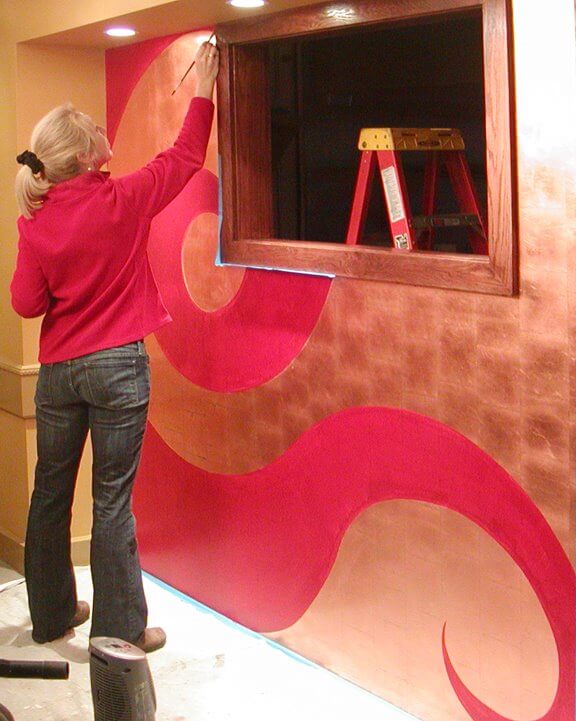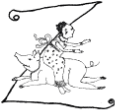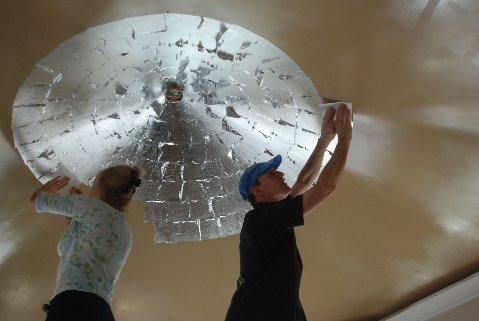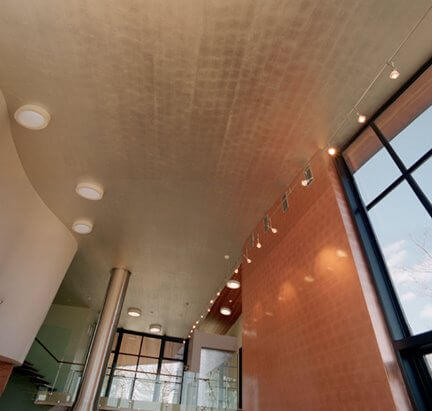Gilding (Metal Leaf) by Doug Garrabrants
Gilding is the art of applying a thin layer of metal to a surface. Leaf & other gilding supplies are available from many sources including SeppLeaf in New York. Leaf is made from metals such as real gold (ranging from 6 – 24 karats), Dutch metal (composition or imitation gold), silver, aluminum, palladium & copper. Real gold and aluminum do not tarnish; all the others will tarnish & must be sealed.
If you wish to do some gilding or contract an artisan to do the work for you this article can help you avoid some of the pitfalls. Start with the surface as smooth as possible. Orange peel is what we call the bumpy surface caused by roller application of paint and the leaf will reflect this texture. If your work is high up like this aluminum leaf ceiling there is no concern. Up close, even brush strokes will reflect. Your level of preparation will depend on your budget. If you can budget a perfectly smooth surface, spraying the base color & size (the glue that holds the leaf) and spraying the clear coat, your finished product will be far better on close inspection.
Start with a base color of bronze or rust, depending on the color you want to see peeking through between the individual pieces of leaf. Over that you must apply the size in an even coat over the entire surface. We like water base Rolco Aquasize. After 15-20 minutes the size is ready to accept the leaf and will continue to be tacky for 36-48 hours. We have found that it is best to have all your work done within 12 hours. Apply the leaf, being careful not to touch it with your bare fingers, using the paper backing. Be sure there are no drafts in the room, the leaf is very light & will blow away. 
When you have finished applying the leaf, you need to carefully burnish it. I use a camel hair brush & cotton batting. When burnishing, be sure to move with the overlaps so you do not tear the leaf away from the size. Gently burnish away all the flapping overlapping metal. Vacuum or gather all the bits so they do not end up in your clear coat.
Let the size dry overnight. At this point you can acid etch the leaf for a beautiful oxidized look or apply a clear coat. Acid etching is a topic for another time because of the vast possibilities & combinations of acids & metals. For the top coat we like Ronan Acrylic Clear Overcoat, a solvent based, fast drying, acrylic clear gloss topcoat. The can says 24 hours to recoat but do not believe it, give it at least 48 hours between coats. This product is very toxic, wear an organic vapor respirator & arrange for adequate ventilation. Two coats are adequate, however we often do 3-4. At this restaurant we then painted the “Logo” over the clear coat in washable flat wall paint. This added the difference in reflectivity to the color disparity creating a beautiful old world look. It took 6 coats of the flat paint to make it opaque. Now order some leaf & give it a try on a frame to start.
All photos © Doug Garrabrants Photography



